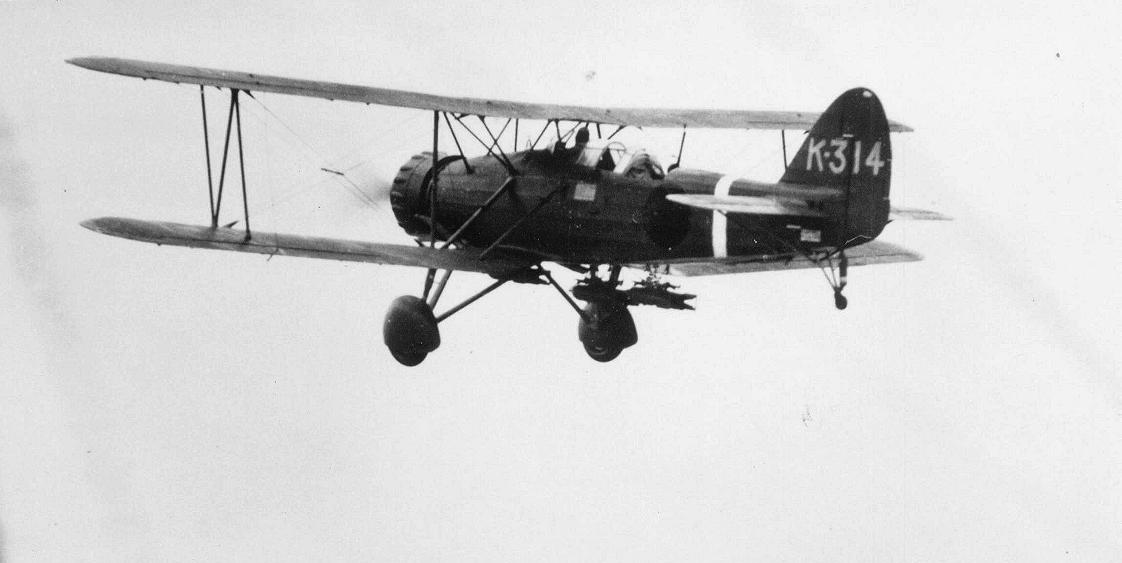
| Historical Information | |||||
| Caption | B4Y torpedo bomber of carrier Kaga, circa late 1930s ww2dbase | ||||
| Date | 1938 | ||||
| Photographer | Unknown | ||||
| Source Information | |||||
| Source | ww2dbaseWikimedia Commons | ||||
| Link to Source | Link | ||||
| Related Content | |||||
| More on... |
| ||||
| Licensing Information | |||||
| Licensing | This work originating in Japan is in the public domain. According to Article 23 of the 1899 Copyright Act of Japan and Article 2 of Supplemental Provisions of Copyright Act of 1970, a work is in the public domain if it was created or published before 1 Jan 1957. Please contact us regarding any inaccuracies with the above information. Thank you. |
||||
| Metadata | |||||
| Added By | C. Peter Chen | ||||
| Photo Size | 1,122 x 563 pixels | ||||
Você gostou deste artigo ou achou este artigo útil? Se sim, considere nos apoiar no Patreon. Qualquer valor já vai ajudar! Obrigado. Por favor, ajude-nos a divulgar o site: Fique atualizado com WW2DB: |
Visitor Submitted Comments
2.  Bill says:
Bill says:
14 Jan 2012 07:10:19 PM
The Carriers Hosho and Unyo were operated as
training carriers, and aircraft transport ships. At times, the air group was made up of about Nine fighters, Eighteen attack bombers. Hosho was the Imperial Navy's
first aircraft carrier survived the Battle of Midway, June 1942, at that time, she still
operated A5M "Claude" fighters, B4Y "Jean" torpedo bombers with a section of the new
A6M Zero fighters.
Later during the war, Hosho had her flight deck extended to operated B6N "Jill torpedo
bombers and D4Y "Judy" dive bombers.
The Unyo was a transport ship converted into a carrier and could carry about Twentyseven aircraft, she was sunk by US submarine in 1944 both ships operated a mix of aircraft for training like the Yokosuka B4Y "Jean and the A5M "Claude" as late as 1943.
Later her aircraft were replaced with A6M Zero, D3A Val and B5N Kate. After WWII Hosho was used to transport Japanese troops and civilians back to Japan, she was later scrapped in 1947.
14 Jan 2012 07:10:19 PM
The Carriers Hosho and Unyo were operated as
training carriers, and aircraft transport ships. At times, the air group was made up of about Nine fighters, Eighteen attack bombers. Hosho was the Imperial Navy's
first aircraft carrier survived the Battle of Midway, June 1942, at that time, she still
operated A5M "Claude" fighters, B4Y "Jean" torpedo bombers with a section of the new
A6M Zero fighters.
Later during the war, Hosho had her flight deck extended to operated B6N "Jill torpedo
bombers and D4Y "Judy" dive bombers.
The Unyo was a transport ship converted into a carrier and could carry about Twentyseven aircraft, she was sunk by US submarine in 1944 both ships operated a mix of aircraft for training like the Yokosuka B4Y "Jean and the A5M "Claude" as late as 1943.
Later her aircraft were replaced with A6M Zero, D3A Val and B5N Kate. After WWII Hosho was used to transport Japanese troops and civilians back to Japan, she was later scrapped in 1947.
All visitor submitted comments are opinions of those making the submissions and do not reflect views of WW2DB.
Pesquisar WW2DB

Notícias
- » Evergreen Museum and Obon Society Working on Returning Undelivered 1945 Mail to Japanese Families (5 set 2025)
- » Wreck of Teruzuki Found (27 jul 2025)
- » USS Orlean's Bow Found (22 jul 2025)
- » The Emperor of Japan Planned to Honor WW2-era Japanese POWs in Mongolia (4 jul 2025)
- » US State Lawmaker John Winter Caught Using Racial Slur "Jap" and Apologized (11 jun 2025)
- » Ver todas as notícias
Foto Aleatória
Admiral Richard Leigh inspecting the crew of his flagship USS California at the ship's forecastle, 1932Estatísticas Atuais do Site
- » 1,183 biografias
- » 337 eventos
- » 45,165 entradas na linha do tempo
- » 1,249 navios
- » 350 modelos de aeronaves
- » 207 modelos de veículos
- » 376 modelos de armas
- » 123 documentos históricos
- » 262 instalações
- » 471 resenhas de livros
- » 28,454 fotos
- » 365 mapas
Citação Famosa da 2ª GM
"We no longer demand anything, we want war."Joachim von Ribbentrop, German Foreign Minister, Aug 1939
Apoie-nos
Por favor, considere nos apoiar no Patreon. Mesmo R$1 por mês já faz uma grande diferença. Obrigado!
Ou, por favor, nos apoie adquirindo alguns produtos do WW2DB na TeeSpring. Obrigado!
13 Jan 2012 05:04:55 PM
Tail code letter "K" used from December 1938
to November 1940. During the late 1930s the
Carrier Kaga's Air Group was made up of.
Sixteen Mitsubishi A5M4 "Claude" fighters,
Sixteen Aichi D1A2 "Susie" Dive bombers and
Twentytwo Yokosuka B4Y "Jean" Carrier bombers
In 1941 the Carrier received replacement
aircraft: Sixteen Mitsubishi A6M2-21 Zeros,
Twentyfour Aichi D3A1 "Val" Dive bombers and
Sixtyfour Nakajima B5N "Kate" bombers.
WHAT ABOUT SUSIE, CLAUDE AND JEAN:
Aichi D1A "Susie" assigned to training and second-line units. Late 1941 at the time of Pearl Harbor the Imperial Navy still had over Sixty D1As. Aircraft were replaced with more modern types and disappeared from service.
Mitsubishi A5M4 "Claude" This was the Navy's
first all metal Carrier-based low-wing monoplane fighter. Claude was phased out and replaced by the new A6M Zero Carrier fighter
saw action during the Philippine campaign and assigned to fighter training schools,
last combat action Battle of Coral Sea was flying from the Carrier Shoho.
Yokosuka B4Y "Jean" operated aboard carriers until 1940, saw action during the China war,
replaced with more modern types.
Survivors were assigned to second-line units and training schools.